All Possible Outcomes
Imagine your project team standing on a single point on a 2-D plane surrounded by a circle. The circle is made up of an infinite number of points. Each point on the circle represents a possible outcome for your project. You can't quite see the outcomes from where you stand.
Some number of those outcomes represents an ideal solution for your project. You can never actually reach an ideal solution but the goal is to get as close as you can with the resources available. The only problem is you don't know in which directions any of those ideal solutions may lie.
As the project gets started the team starts making decisions. Some deliberately, some by accident. With each decision the range of possible outcomes narrows. I’ve seen a few approaches to dealing with this decision making process.
Boil the Ocean
In an effort to ensure they don't miss an ideal solution many teams refuse to focus. Anxiety about missing the right solution causes limited resources to be spread very, very thinly in an effort to understand, in as much detail as possible, all those points on the circle of possibilities. Teams languish in analysis paralysis. Results are mediocre at best. This is the failure mode I've witnessed most frequently in large corporations.
At IDEO I worked on a project for HP to redesign their digital photography offering. The project lasted over a year as we explored in great detail what HP cameras, printers, physical artifacts and cloud services should be like in the future. After so many months of exploration all we had to show for it were a lot of early stage prototypes. If any one of the ideas were ever to be implemented there would still be many iterations required before any design were finalized and product shipped.
Artificial Focus
In an effort to avoid this paralysis, teams leap from the starting point to a very narrow segment of the circle of possibilities. Confidence of strong leaders removes any feeling of ambiguity about the outcome and the team focuses on execution from day one. It might work - sometimes the lone genius knocks it out of the park, but that is rare. I think artificial focus is the cause behind many startup failures.
At Tylr Mobile we suffered from this artificial narrowing of possible outcomes. We struggled for months to tackle what we called "the email problem" with little success. With our runway quickly coming to an end we made a few last minute attempts to "pivot" toward another possibility but it was too late. Tylr joined the legion of failed Silicon Valley startups with our first product still in beta.
Balanced Exploration
An approach that comes naturally to many designers seeks to find a balance. Looking broadly but not in great detail or resolution at the circle of possibilities allows designers to make informed decisions about where to focus. Design research and experience prototyping are two tools designers can employ to develop useful information to support the decisions that move the team towards the circle of possibilities.
There are definitely multiple ways to approach a project. There are no approaches that guarantee great outcomes. This model helps me be conscious of the tradeoffs I make between breadth and depth of exploration. In each project I take on I seek to balance the need for expediency, working with constrained resources and knocking it out of the park.





